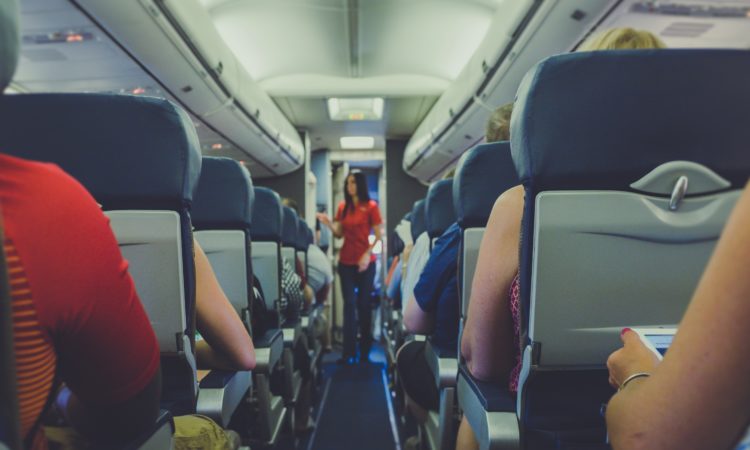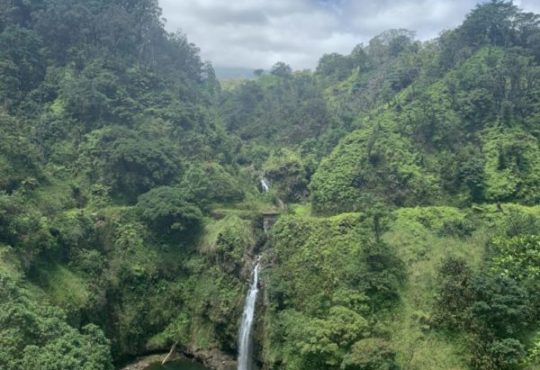
As soon as Shelia Fedrick spotted the young girl with greasy blonde hair seated by the window seat of aisle ten on the flight from Seattle to San Francisco, she knew something was amiss. According to Fedrick, who worked as a flight attendant at Alaska Airlines, the girl looked like someone who had gone through hell. She figured that the age of the girl was around 14-15 years old, and she was travelling with an older man who looked elegant and stylish. The sharp difference between both of them prompted Fedrick to take action by engaging them in a friendly chat, but the man rebuffed the gesture.
Fedrick confirmed dropping a note in one of the bathrooms aboard the flight, and the girl replied to the note with the words, “I need help”. She later put a call through to the pilot and informed him about the passengers she tried to engage in a conversation on the flight; necessary measures were taken as security agents were already waiting at the terminal as soon as the plane landed.
AIRLINE AMBASSADORS
Nancy Rivard who was an experienced flight attendant and founder of Airline Ambassadors advocated that all airline staff in the country should have this type of instinct. She has taken the bold step by training attendants on the best methods to identify signs of human trafficking.
Last year, the United States Immigration and Customs Enforcement agencies recorded arrests of two thousand human traffickers, and about four hundred victims were rescued. In the previous eight years, the Airline Ambassador has been engaging in activities that are geared towards the training of the flight crew members to identify report such activity as soon as possible. These ambassadors have been trained to inform the crew if they see a potential human trafficker with a victim, while enforcing the appropriate measures.
Rivard and other colleagues went to Houston, Texas to train about one hundred flight attendants, who have agreed to attend the Airline Ambassadors training program on how to spot signs of human trafficking.
The two-day event had former victims share their bitter experiences with the audience. The training session had modules where the crew members who are on board were shown the simple methods of identifying the passengers with terrified looks on their faces. They were also taught to look out for those who are traveling with individuals who don’t look like their family member or parent. Children looking battered and bruised are not an exception, as volunteers are advised to look out for those signs.
The training session also shared tips on how to identify victims with examples of an individual trying to speak for an alleged victim, or an instance where these victims are not allowed to leave their seats, or a case where a person suddenly becomes aggressive when asked some questions. The main reason for this behavior is that most of the victims have been sedated before they were taken on a flight.
SUPER BOWL CONNECTION
The significant part of the training session was held at Houston’s William P. Hobby Airport, where the participants were shown how to demonstrate their dexterity in an airport bustling with activity. The training took place at the airport at a time when the Super Bowl was being held. Rivard want to make sure that these flight attendants were placed in Houston where they could quickly recognize someone who requires assistance.
Though there is no correlation between human trafficking and the Super Bowl, experts have argued that the rate of sex work increases exponentially in a relationship with travel when a major event is about to take place. Moreover, human trafficking and sex work are like Siamese twins that cannot be separated.
In a solidarity message, Houston’s Mayor Sylvester Turner took advantage of the opportunity to explain the continuous efforts of the city to get rid of human trafficking in Houston, with every means available.
During a press conference, he said he does not want Houston to be tagged as a place for human trafficking.
LEARNING TO PULL BACK
One of the most challenging lessons observed by the Airline Ambassador flight attendants, is learning to pull back when they spot a victim on board. Rivard said the flight attendants had been trained not to attempt to rescue the victim, as they are prone to danger and the attacker may also strike the victims as well as the attendants.
The process is simple. Flight attendants are trained to contact the pilot when they recognize a human trafficking victim. The pilot makes a call before landing the plane, and security agents will be informed to check the aircraft on arrival at its destination.
According to Andrea Hobart, Airline Ambassador trainer and an employee with Alaska Airlines, the complicated part of the training is leaving the matter after making a report about the incident. Ambassadors are expected to leave the details in the hands of the appropriate agencies to investigate the case.
Airline Ambassadors have also called for the intervention of Congress to recommend regular training for airline staff across all airlines in the United States.
On a visit to Congress in 2010, Sandra Fiorini who had a successful career as a flight attendant with American Airlines and also an Airline Ambassador, shared her bitter experience with trafficking. She said most girls were trafficked from Moscow to the United States with the promise of making them famous models and actresses.
The FAA Extension, Safety, and Security Act of 2016 approved the training of flight attendants to identify potential trafficking victims last year. Consistent efforts have been made by Rivard and Fiorini to get the approval of Congress to support and create awareness for the training of flight attendants to curb the menace of trafficking. Nevertheless, Rivard will continue to work hard to educate flight attendants to stay vigilant and ensure the protection of human trafficking victims.





